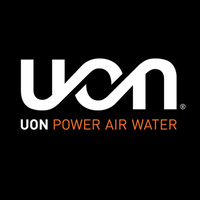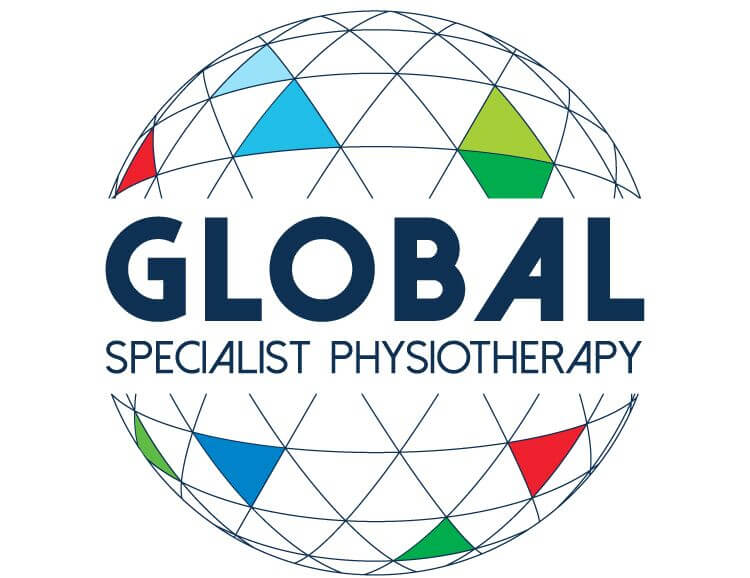Orthopaedic
Athroscopy
Arthroscopy is a procedure completed for both diagnosing and treating joint problems. This procedure creates a small incision where a camera is inserted to see inside the joint and repairs are made if necessary.
Some common conditions that are treated with arthroscopic surgery are:
– Damaged or torn cartilage
– Loose bone fragments
– Inflamed joint lining
– Torn ligaments
– Scarring within the joint
Rehabilitative exercises are an important part of your recovery post-surgery. These exercises can help strengthen the surrounding muscles to support the joint and restore your overall function and mobility of the joint. These exercises should start with light muscle contractions and strengthening and gradually progress to load bearing and weighted activity. Depending on the joint and surgical repairs performed your rehabilitation will be different. An Exercise Physiologist can provide you a tailored program to get your best surgical outcome.
Some common conditions that are treated with arthroscopic surgery are:
– Damaged or torn cartilage
– Loose bone fragments
– Inflamed joint lining
– Torn ligaments
– Scarring within the joint
Rehabilitative exercises are an important part of your recovery post-surgery. These exercises can help strengthen the surrounding muscles to support the joint and restore your overall function and mobility of the joint. These exercises should start with light muscle contractions and strengthening and gradually progress to load bearing and weighted activity. Depending on the joint and surgical repairs performed your rehabilitation will be different. An Exercise Physiologist can provide you a tailored program to get your best surgical outcome.
Total Hip Replacement
A total hip replacement also known as a total hip arthroplasty is performed to replace damaged bone and cartilage of the hip joint. The procedure removes the head of the femur and replaces it with a metal ball and stem placed into the hollow of the femur. The socket of the hip joint (the acetabulum) is removed and replaced with a metal socket. A spacer (metal, ceramic or plastic) is then placed between the new ball and socket to allow for a smooth surface for the joint to pivot on. These three replacements create your new hip joint. Hip replacement surgery is beneficial and a successful surgery for reducing pain and discomfort due to arthritis. It is usually recommended when other modalities for treatment and pain management are inadequate and when pain and function limit an individual’s normal activity.
Regular exercise post-surgery is crucial to restore your strength, mobility, and function to return to everyday activities and independence. Supervised exercise post-surgery provides better patient outcomes in terms of gait speed, cadence, and strength of muscles surrounding the hip joint. Exercise under the supervision of an Exercise Physiologist will ensure safe recovery and return to activity and independence.
Regular exercise post-surgery is crucial to restore your strength, mobility, and function to return to everyday activities and independence. Supervised exercise post-surgery provides better patient outcomes in terms of gait speed, cadence, and strength of muscles surrounding the hip joint. Exercise under the supervision of an Exercise Physiologist will ensure safe recovery and return to activity and independence.
Total Knee Replacement
Total knee replacement surgery or otherwise known as knee arthroplasty is a surgical procedure where the damaged knee joint and kneecap are resurfaced at the ends of the bones that form the knee joint. This kind of surgery is usually recommended where there is significant damage from arthritis, or a severe knee injury has occurred.
Surgery provides reduced pain symptoms and improved perceived function and quality of life. However, surgery also poses significant impairments in muscle strength, knee function and knee proprioception. Exercise therapy both pre- and post-surgery provides many benefits to the outcomes of your knee surgery. Exercise therapy before surgery (perioperative exercise) is beneficial for recovery post-surgery and may facilitate accelerated recovery and post-surgical function.
Rehabilitation exercise post-surgery is widely promoted and essential for the recovery and return to function of the knee joint. Exercise post-surgery will allow you to have function and stability around the knee joint overall improving your quality of life and post-surgical outcomes. Our Accredited Exercise Physiologists are able to provide you appropriate exercise and information during all stages of your knee surgery journey.
Surgery provides reduced pain symptoms and improved perceived function and quality of life. However, surgery also poses significant impairments in muscle strength, knee function and knee proprioception. Exercise therapy both pre- and post-surgery provides many benefits to the outcomes of your knee surgery. Exercise therapy before surgery (perioperative exercise) is beneficial for recovery post-surgery and may facilitate accelerated recovery and post-surgical function.
Rehabilitation exercise post-surgery is widely promoted and essential for the recovery and return to function of the knee joint. Exercise post-surgery will allow you to have function and stability around the knee joint overall improving your quality of life and post-surgical outcomes. Our Accredited Exercise Physiologists are able to provide you appropriate exercise and information during all stages of your knee surgery journey.
Kyphosis
Kyphosis is defined by an excessive curvature of the thoracic spine which is characterised by forward rounding of the upper back and shoulders. It can arise from genetics, age and poor postures. Kyphosis into adulthood and the elderly population can be associated with significant health impairments. In severe cases it has been linked to underlying conditions such as osteoporosis, vertebral fractures, degenerative disk disease and spinal extensor muscle weakness. Exercise and physical therapy can have benefits for each type of Kyphosis. Due to the nature of Kyphosis and the accompanied increase in risk of underlying conditions, exercise and interventions need to be tailored accordingly. Specific and tailored exercises can aim to relieve pain and improve postures. Exercise therapy not only provides physiological benefits for those with Kyphosis, but it has also been shown to improve self-image, confidence and self-satisfaction with appearance.
Postural
Postural kyphosis is the most common type and arises from poor postures. It can occur in any age group from childhood, during rapid growth phases, adulthood, and elderly population. It commonly presents itself in adolescence and elderly population and is clinically noted as poor posture. Poor postures and forward slouched postures create stress and stain on ligaments and muscles that support the spine. Prolonged strain and cause these muscles to become weak and long and muscles through the front of the upper body to become short. Postural Kyphosis is not typically associated with severe structural abnormalities of the spine itself and can be corrected when sitting up straight. However, prolonged poor postures and curvature in the spine can increase risk of underlying bone and muscle conditions. Strengthening of the muscles supporting the spine and abdomen as well as posture training have been shown to reduce clinical measures of Postural Kyphosis.
Scheuermann’s Kyphosis
Scheuermann’s Kyphosis typically becomes apparent during adolescent years and can result in significant deformity of the thoracic spine and structural abnormalities. Unlike Postural Kyphosis, Scheuermann’s Kyphosis will not be able to be corrected by sitting up straight. Due to the significant curvature of the thoracic spine, the lumbar spine can deform and result in a compensatory inward curve. Treatment for this type of Kyphosis is usually a mix of nonoperative management such as exercise therapy, pain management and braces, and in severe cases operative management. For Scheuermann’s Kyphosis, exercise therapy is important to long term management. Strengthening and stretching can reduce pain and improve outcome measures.
Congenital Kyphosis
Congenital Kyphosis is present at birth and is a result of the spinal column failing to develop normally while in utero. Often those with congenital kyphosis may need surgical treatment to slow or stop the progression of the curve. Those with Congenital Kyphosis may undergo several surgeries in their lifetime. Exercise therapy to support and maintain muscle mass and flexibility will provide positive functional outcomes and recovery from surgery.
Postural
Postural kyphosis is the most common type and arises from poor postures. It can occur in any age group from childhood, during rapid growth phases, adulthood, and elderly population. It commonly presents itself in adolescence and elderly population and is clinically noted as poor posture. Poor postures and forward slouched postures create stress and stain on ligaments and muscles that support the spine. Prolonged strain and cause these muscles to become weak and long and muscles through the front of the upper body to become short. Postural Kyphosis is not typically associated with severe structural abnormalities of the spine itself and can be corrected when sitting up straight. However, prolonged poor postures and curvature in the spine can increase risk of underlying bone and muscle conditions. Strengthening of the muscles supporting the spine and abdomen as well as posture training have been shown to reduce clinical measures of Postural Kyphosis.
Scheuermann’s Kyphosis
Scheuermann’s Kyphosis typically becomes apparent during adolescent years and can result in significant deformity of the thoracic spine and structural abnormalities. Unlike Postural Kyphosis, Scheuermann’s Kyphosis will not be able to be corrected by sitting up straight. Due to the significant curvature of the thoracic spine, the lumbar spine can deform and result in a compensatory inward curve. Treatment for this type of Kyphosis is usually a mix of nonoperative management such as exercise therapy, pain management and braces, and in severe cases operative management. For Scheuermann’s Kyphosis, exercise therapy is important to long term management. Strengthening and stretching can reduce pain and improve outcome measures.
Congenital Kyphosis
Congenital Kyphosis is present at birth and is a result of the spinal column failing to develop normally while in utero. Often those with congenital kyphosis may need surgical treatment to slow or stop the progression of the curve. Those with Congenital Kyphosis may undergo several surgeries in their lifetime. Exercise therapy to support and maintain muscle mass and flexibility will provide positive functional outcomes and recovery from surgery.






